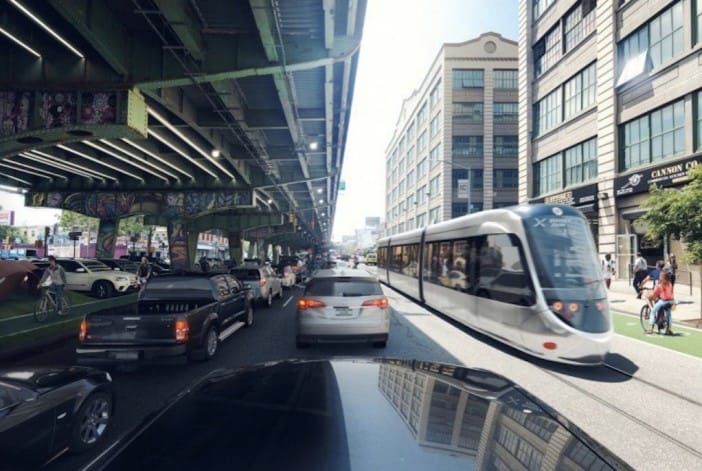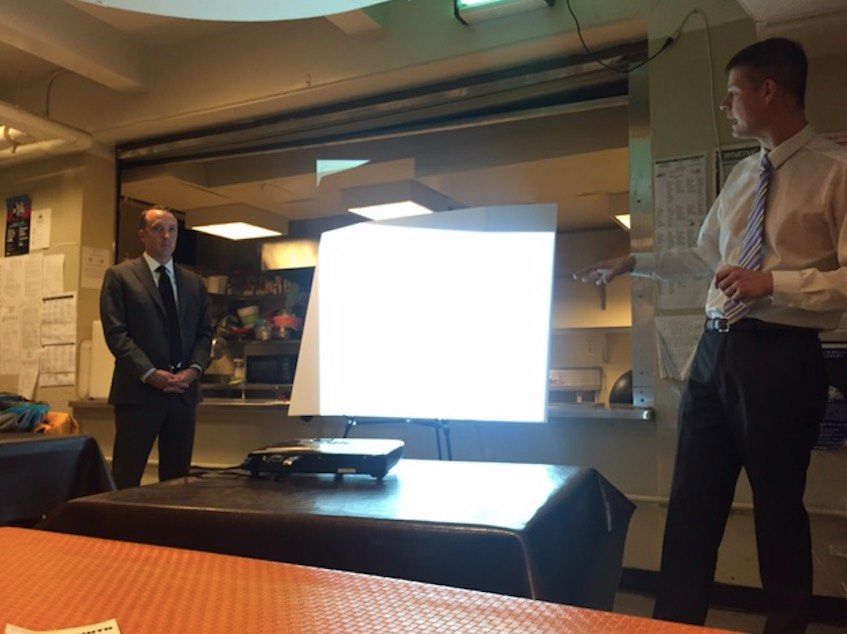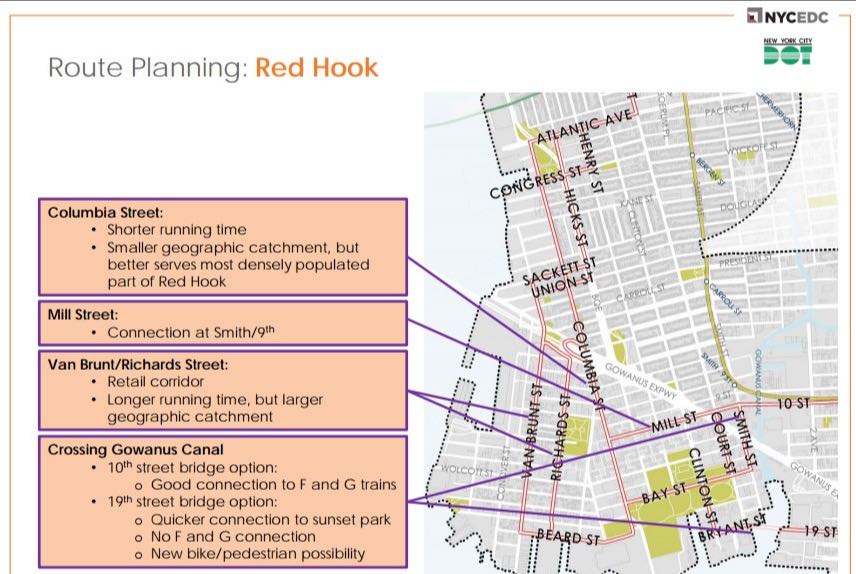‘No One Has Ever Asked If We Even Want It’: Prickly Public Responds To 16 Miles Of BQX Streetcar Proposal


Community members made their feelings known Thursday night over the prospect of theBrooklyn Queens Connecter (BQX), a proposed 16-mile light rail system that would run from Sunset Park to Astoria.
“What feedback do you need that the money (for the system) could be spent on anything else,” Carroll Gardens resident Matthew Fairley asked during the presentation. And then added, to audience applause, “No one has ever asked if we even want it.”
Over 50 people packed into a Red Hook community center to hear about the envisioned railway during a Community Board 6 Transportation/Public Safety committee meeting.
Adam Giambrone, who is leading the Economic Development Corporation’s feasibility studies and Jeff Peel, a project manager at the Department of Transportation (DOT), shared the current footprint and projected costs of the system, as well as the potential timeline for development.
While they were forthcoming with ideas, Giambrone and Peel underscored the fact that much more listening, research, and analysis needs to be done before any decisions are made.
The system would address some of the “major challenges” facing the area, according to Giambrone, including, “dense urban growth” in Brooklyn and Queens and “poor transit links between these areas.” He said it would also alleviate some transit inequity issues and provide an option to the 40,000 residents in New York City Authority buildings that live in the corridor.
“This would provide a critical north-south connection,” he said. “Remember that most current local transit options move people east-west.”

The proposed electric light rail system would run on the road in a separated lane. In most areas, the trains would run on overhead wires, although on streets with low-hanging trees, it could rely on batteries. The average speed, including stops, would be about 12 miles per hour, with top speeds reaching 20-25 miles per hour. Trains would rain every 5-10 minutes. The system would be geared towards “lighter weight, shorter-delimitation” travel.
While both Giambrone and Peel reiterated that light rails are faster and less disruptive than subways to build and operate, the audience peppered them with questions on the route, budget, and the realities of running on-street cars.
Preliminary cost estimates put the construction budget at $2.5 billion and operating costs at $30 million a year. They also project a $25 million positive economic impact on job creation and commerce. The system would drive foot traffic to business along and near the route while subways, Giambrone said, “suck people underground where they don’t interact with businesses.”
“Big numbers like this, unless you have context are hard,” Giambrone said. “The 2nd Avenue subway costs one billion dollars a mile.”

Local resident Bob Diamond of the Brooklyn Historical Society suggested that the “city can’t do it alone” and in order to fund the project, would have to consider a private-public partnership.
On ridership, the city roughly estimates around 55,000 people a day, which is lower than ridership on the G train but higher than the B61 bus route. Residents pushed back on the issue of duplicating bus and train routes that don’t currently get a lot of use. One resident said, “You are looking at building 16 miles of rail that may or may not be needed. It seems like you’re looking for a solution in search of a problem”
Still, Giambrone said, building the light rail is justified because of the city’s projected growth in these areas.
“They’re going to go someplace and it’s better to plan,” he said.
As expected, the proposed routes for the tracks, which are at a minimal 22 feet wide, elicited prickly feedback from the audience. DOT is doing ongoing analysis of the potential tradeoffs of different routes and considering impact on traffic, bike-lanes, historic neighborhoods, dense residential areas and intersections. They presented potential routes and the drawbacks of three different swaths of the system, making clear that nothing was finalized.

When pushed on the threat of the railways absorbing coveted on-street parking, Giambrone said that “these are the things we have to talk about” and listened and captured concerns.
“We are looking into all of the trade-offs,” he said. “But you won’t be able to keep the same number of traffic lanes, add a street car and keep parking.”
Their presentation and listening session at the CB6 meeting was one of many DOT is conducting this fall. After these meetings, EDC and DOT plan to issue a detailed report on the feasibility of the system in early 2017, which will include the chosen route.



